Safety Tips for Returning to Cycling
Returning to cycling can be both exciting and daunting, especially if it’s been a while since you’ve hit the road. To ensure a safe and enjoyable experience, you’ll want to familiarize yourself with essential information and best practices across various aspects of cycling, such as bike maintenance, proper equipment, cycling posture, traffic rules, and much more. This comprehensive guide covers everything you need to know, helping you build your confidence and competence on the bike.
Bike maintenance and inspection
Title: Bike Maintenance and Inspection for a Safe Ride
Cycling is not only a great way to stay fit but also an incredibly fun and environmentally friendly mode of transportation. As a cycling enthusiast, it’s essential to maintain and inspect your bicycle routinely to ensure it remains in optimal condition for a safe and enjoyable ride. Follow these simple steps to check tire pressure, adjust brakes, lubricate chains, and ensure all parts are secure on your bike.
1. Tire Pressure Inspection:
- a) Purchase a bicycle-specific tire pressure gauge from your local bike shop or online.
- b) Check the recommended tire pressure range, usually found on the sidewall of the tire, or consult your bike’s owner’s manual.
- c) Inflate the tires to the recommended pressure using a bike pump.
- d) Ensure the tire pressure is consistent on both tires.
- e) Inspect tires for wear, cracks, or punctures. Replace them if necessary.
2. Adjusting Brakes:
- a) Inspect brake pads for wear – if they appear uneven or worn out, consider replacing them.
- b) Clean the rims of your wheels where the brake pads make contact to ensure optimal braking performance.
- c) Ensure the brake levers on the handlebars are functioning correctly. They should snap back into place once released.
- d) Check brake cable tension – if there is too much slack, use the barrel adjusters on the brakes to tighten the cable or consult a bike mechanic for further assistance.
3. Lubricating Chains:
- a) Inspect the chain for dirt, rust, or any signs of wear.
- b) Clean the chain with a brush or rag and a suitable bike-specific degreaser.
- c) Apply a bike-specific lubricant to the chain while turning the pedals to ensure the lubricant is evenly distributed.
- d) Wipe off any excess lubricant to avoid attracting dirt and debris.
4. Ensuring all parts are secure:
- a) Check each component of your bike for any signs of looseness or damage. This includes the handlebars, seat, wheels, pedals, and any accessories you may have mounted on your bike.
- b) Use a bike-specific multi-tool to tighten any loose bolts or nuts. Ensure not to overtighten them as this can cause damage to the components.
- c) If you are unsure about the condition of a specific part, visit your local bike shop for expert advice or assistance.
5. Other safety considerations:
- a) Make sure all reflectors and lights are functioning correctly, clean, and securely mounted.
- b) Wear a helmet and ensure it is properly fitted to your head.
- c) Plan your cycling route to avoid high-traffic areas or roads that are not well-maintained.
- d) Obey all traffic laws and be vigilant when cycling on busy roads.
Conclusion:
Regular bike maintenance and inspection will ensure the longevity of your bicycle and provide you with a safe and enjoyable riding experience. By checking your bike’s tire pressure, adjusting brakes, lubricating chains, and inspecting the overall condition of your bicycle, you can minimize the risk of accidents and injuries. Always remember to ride safely and responsibly on the road.
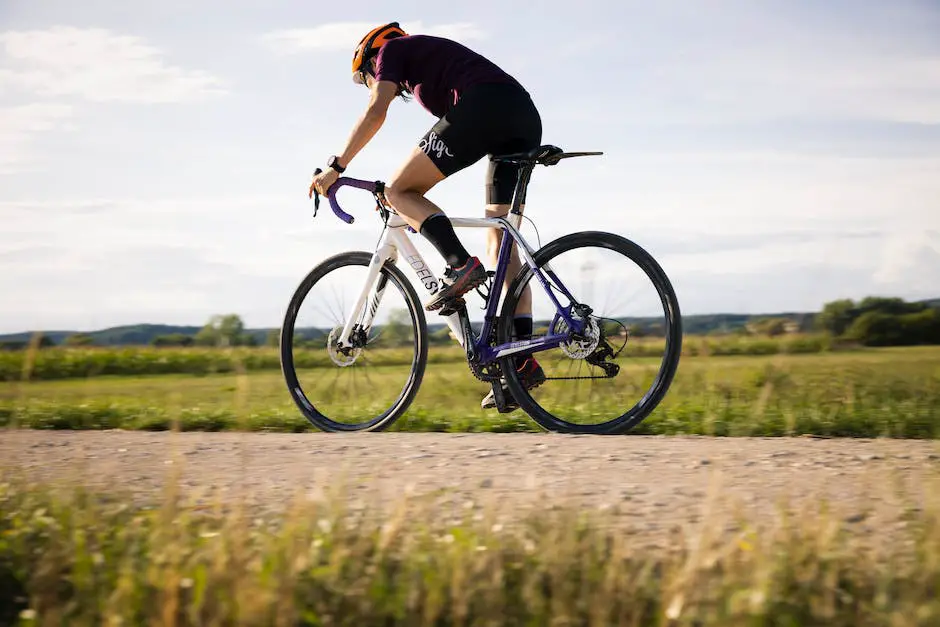
Proper cycling equipment
Title: Essential Cycling Equipment and Safety Tips for Enthusiasts and Hobbyists
Introduction:
Returning to cycling or just starting out can be an exciting adventure, but it is essential to consider your safety while riding. Wearing appropriate gear and having essential accessories can vastly improve your cycling experience and ensure your safety on the roads. In this guide, we will discuss the importance of proper cycling equipment and offer safety tips for cyclists.
1. Wearing a helmet:
The importance of wearing a helmet cannot be overstated. A good-quality helmet can protect your head from severe injuries in case of a crash or fall. When choosing a helmet, ensure it fits snugly without being uncomfortably tight and sits level on your head. Look for helmets that meet safety standards, such as the Consumer Product Safety Commission (CPSC) certification in the United States.
2. Gloves:
Gloves are essential not only for protecting your hands in case of a fall but also for providing a better grip on your handlebars. They can also help minimize vibrations and chafing. Choose gloves that fit well and allow for adequate finger dexterity. Gloves with padding can provide additional comfort during long rides.
3. Appropriate clothing:
Wearing suitable clothing while cycling is crucial for comfort and safety. Opt for moisture-wicking, breathable fabrics that help keep you dry and comfortable. Bright-colored or reflective clothing can also help increase your visibility on the road. Consider investing in padded shorts or pants to provide added support and reduce chafing during long rides. Make sure your clothing isn’t too loose, as it may get caught in the bike’s moving parts.
4. Lights:
Bicycle lights are essential, especially when cycling in low-light conditions or during nighttime. A white front light and a red rear light can significantly increase your visibility to other road users. Choose lights that are easily detachable and rechargeable. Ensure that you regularly charge your lights so that they don’t run out of power during your ride.
5. Reflectors:
Reflectors can enhance your visibility on the road, making you more noticeable to other road users, particularly at night or in low-light conditions. Ensure that your bike has reflectors on the front, rear, and sides, as well as on the pedals. You can also wear reflective gear, such as bands, vests, or stickers, to increase your visibility further.
6. Bells or horns:
Having a bell or horn on your bike allows you to alert pedestrians, other cyclists, or vehicles of your presence. This can help avoid accidents or collisions. Choose a bell or horn that is easily accessible while you are riding and produces a clear, loud sound.
Conclusion:
Returning to cycling or starting as a hobbyist can be a fun and rewarding experience. By investing in the proper equipment and adhering to safety tips, you can ensure that your cycling adventures are both enjoyable and safe. Always prioritize your safety and the safety of others while cycling, and be mindful of the rules of the road. Happy cycling!
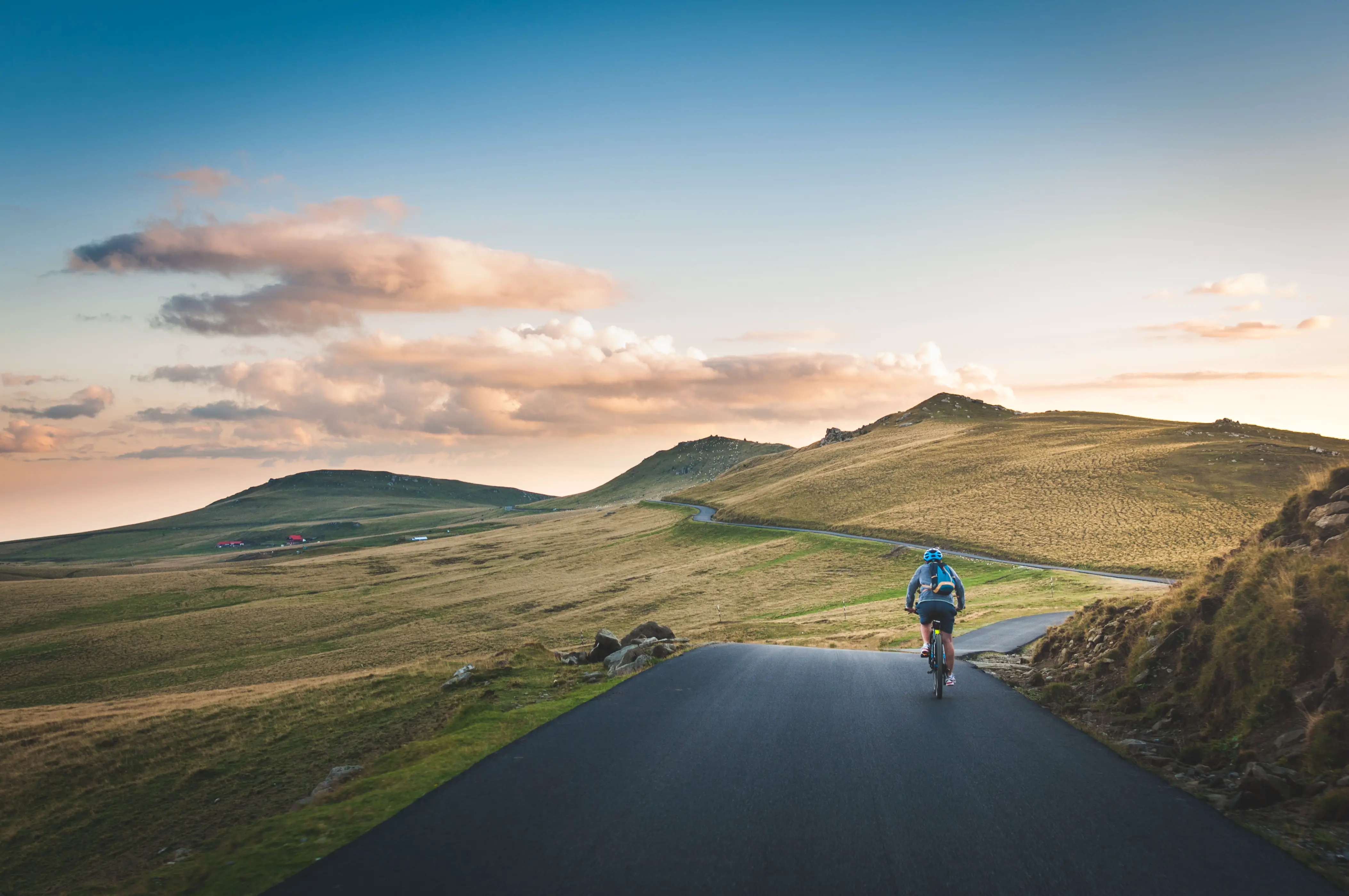
Photo by davidmarcu on Unsplash
Cycling posture and ergonomics
Title: Cycling Posture and Ergonomics: Tips for Comfort and Injury PreventionIntroduction:Cycling is an enjoyable activity with numerous health benefits. However, improper posture and ergonomics can lead to discomfort and potential injuries. As a cycling enthusiast, it’s important to ensure you’re maintaining proper posture while cycling. This guide will provide you with tips to achieve optimal cycling posture and prevent discomfort or injury.1. Saddle Height:Ensure your saddle is positioned at the correct height. To determine this, sit on the saddle and place the heel of your foot on the pedal at its lowest position. Your leg should be fully extended without having to tilt your hips. Keep in mind that when pedaling, the ball of your foot should make contact with the pedal, so your knee will have a slight bend when cycling.2. Saddle Tilt:Adjust the tilt of your saddle to be parallel to the ground. This will allow your body weight to be evenly distributed and help prevent discomfort in the groin area. If you experience back or neck strain, tilt the saddle slightly downwards; however, be cautious of tilting too much as this can place excessive pressure on your wrists and hands.3. Saddle Fore/Aft Position:Position the saddle so that when the pedal is at the 3 o’clock position and you place the ball of your foot on it, your knee should be directly above the pedal spindle. This alignment will help promote efficient pedaling and minimize knee strain.4. Handlebar Height and Reach:Adjust the height and reach of your handlebars to maintain a comfortable bend in your elbows and relaxed grip. Your back should be angled between 45-60 degrees with the ground, and the weight distributed on your rear end, hands, and feet. This will prevent strain on your arms, shoulders, and back and help maintain proper posture during your ride.5. Hand Positioning:Alternate between different hand positions during your ride to avoid strain and numbness. Drop bars offer multiple options, such as the tops, hoods, and drops. For flat or riser bars, consider adding bar ends or ergonomic grips for additional hand positions.6. Proper Form:Maintain a neutral spine and engage your core muscles while cycling. Avoid arching your lower back, and keep your chest open and your shoulders relaxed. Look ahead, as looking down can cause strain in your neck and upper back. Keep your elbows slightly bent and relaxed to absorb shocks and bumps while riding.7. Foot Positioning:Balance your foot on the pedal so that the ball of your foot is centered over the pedal spindle. This position will allow you to pedal with optimal power while reducing the risk of knee strain and injury.8. Practice and Adjust:Riding with proper posture and ergonomics takes practice. Don’t hesitate to make small adjustments to your bike setup to find the most comfortable and efficient position for you. If you are unsure about your setup or experience discomfort, consult a professional bike fitter.In Summary:Achieving proper cycling posture and ergonomics is crucial for a comfortable and safe riding experience. By following these tips, you’ll be able to minimize discomfort, prevent injuries, and enjoy your return to cycling. Happy riding!
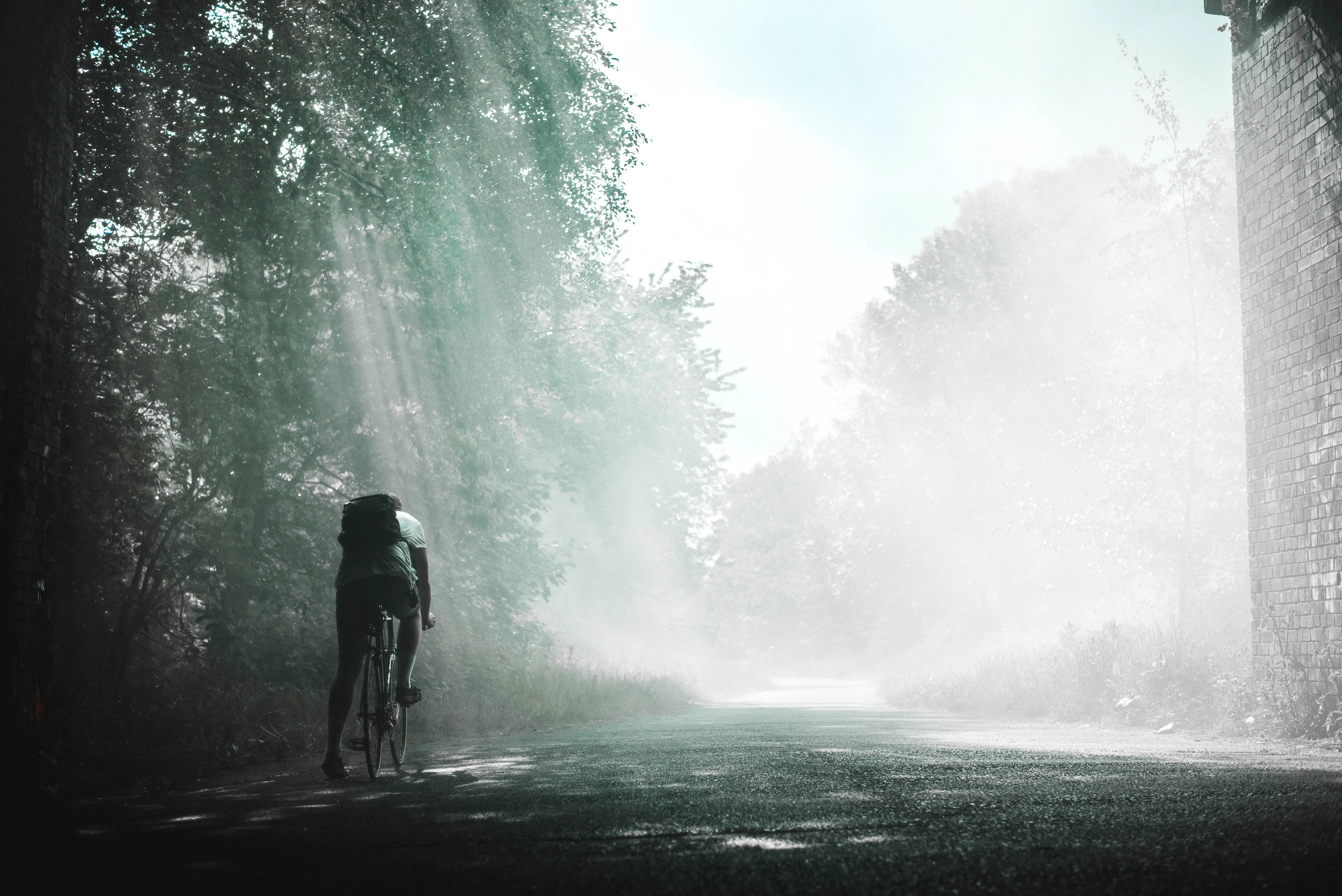
Photo by rikkichan89 on Unsplash
Traffic rules and cycling etiquette
Title: Safety Tips for Returning to Cycling: Traffic Rules and Cycling Etiquette
Introduction: Cycling is an excellent way to stay active, healthy, and environmentally friendly. As a returning cyclist, it’s essential to familiarize yourself with traffic laws and essential cycling etiquette to ensure your safety when sharing the road with pedestrians and motor vehicles. Here are some valuable tips for your return to cycling:
- Know the rules of the road: Cyclists must follow the same traffic laws as motor vehicles. This means stopping at stop signs and red lights, signaling turns, and yielding to pedestrians. Familiarize yourself with your state and local laws about bicycles, as these laws vary by location.
- Ride in the same direction as traffic: Ride your bike in the same direction as cars to make yourself more visible to drivers and reduce the risk of accidents.
- Use bike lanes when available: When cycling on the road, use bike lanes whenever possible. Stay within the designated bike lane and avoid weaving in and out of traffic.
- Signal your intentions: Use hand signals to indicate your intention to turn, change lanes, or stop. This helps motorists and pedestrians anticipate your movements.
- Be visible and predictable: Wear bright clothing, use reflective materials or wear a safety vest, and use lights at night to increase your visibility to motorists. Be predictable in your movements – ride in a straight line, signal turns, and avoid sudden swerves or movements.
- Maintain your bike: Regularly inspect your bike to ensure it is in good working condition. Check the brakes, gears, and tires to make sure they are functioning safely and efficiently.
- Use a helmet: Always wear a properly-fitted helmet when cycling, as it significantly reduces the risk of head injuries in case of an accident.
- Practice defensive cycling: Be aware of your surroundings and anticipate potential hazards. Keep an eye out for parked cars, pedestrians, potholes, and other obstacles, and be ready to take evasive action if necessary.
- Pass with care: When overtaking other cyclists or pedestrians, always pass on the left, and give ample space when doing so. Let them know you are passing by saying “on your left” or using a bell.
- Be courteous to pedestrians: Yield to pedestrians crossing the street or on shared paths, and give them a wide berth when passing. Slow down and use caution when riding near children, pets, or in crowded areas.
- Respect other road users: Be courteous to drivers and other road users by sharing the road, signaling your intentions, and being patient in busy situations. Remember that everyone has a right to use the road safely.
- Learn from experienced cyclists: Join a local cycling club, attend workshops, or take a cycling safety course to gain knowledge and experience about safe cycling practices.
In conclusion, returning to cycling requires some effort in learning about traffic rules and cycling etiquette. By following these guidelines, you’ll ensure your safety and the safety of others while enjoying the many benefits of cycling.
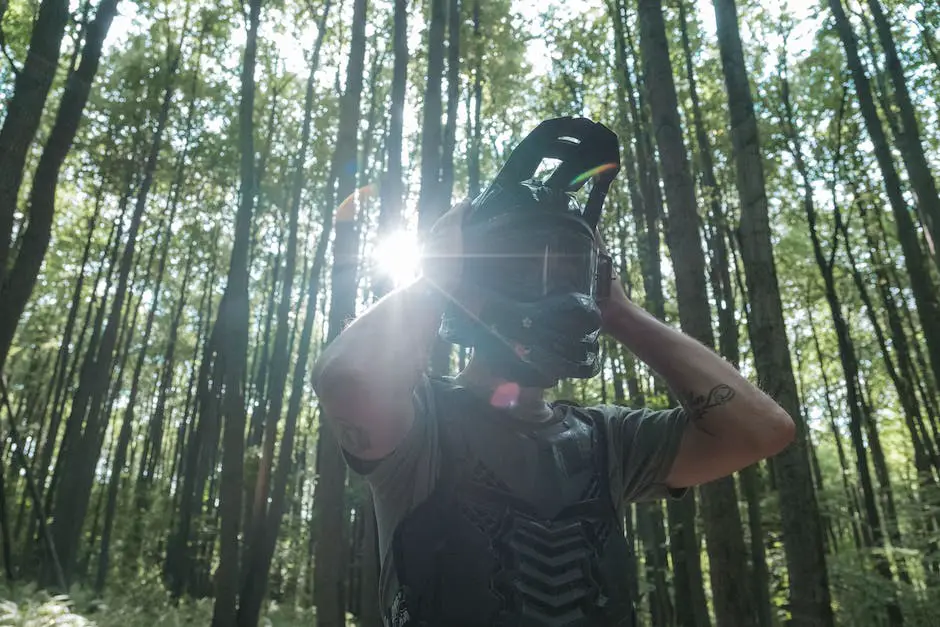
Bike handling skills
Title: Bike Handling Skills for Safer Cycling
Introduction:
Cycling is an enjoyable and healthy activity that can be resumed safely by following some basic guidelines. Here are some instructions on basic bike handling skills, including starting, stopping, turning, and braking, to increase your overall confidence and competence while cycling.
1. Prepare your bike for safety:
- Check the tire pressure and make sure they are properly inflated.
- Ensure that your brakes are functioning correctly.
- Adjust your seat height so that your leg is nearly straight when extended on the pedal.
- Perform a safety check by inspecting your bike for any loose parts or wear and tear.
2. Starting your ride:
- Position yourself on a flat surface.
- Stand over the bike with both feet on the ground.
- Hold the handlebars with both hands, ensuring a secure grip.
- Place one foot on the pedal, keeping the other on the ground for balance.
- Push off the ground with the foot that’s on the ground and start pedaling.
3. Stopping safely:
- To stop, gently apply equal pressure to both brake levers.
- Make sure you are braking evenly to avoid skidding or tipping over.
- As you come to a stop, shift your weight back and lower one foot to the ground for balance.
4. Turning and cornering:
- As you approach a turn, slow down to a comfortable speed.
- Look in the direction you want to go, turning your head to check for oncoming traffic.
- Shift your body weight to the inside of the turn while leaning the bike slightly to the outside.
- Keep your inside pedal up and your outside pedal down for better balance.
- Gradually apply pressure to the inside handgrip to steer the bike into the turn.
5. Braking techniques:
- Practice using both front and rear brakes simultaneously to ensure safe stopping.
- When braking, apply gentle and even pressure to both brake levers.
- Shift your weight back on the saddle while braking to improve stability.
- In wet or slippery conditions, brake earlier and more gently than usual.
6. Maintain proper cycling etiquette:
- Always obey traffic laws and be aware of your surroundings.
- Use hand signals to communicate with drivers and other cyclists.
- When riding with others, maintain a safe distance and avoid sudden movements or abrupt stops.
Conclusion:
By practicing these basic bike handling skills, you can enhance your safety while cycling and enjoy a more confident resume to this enjoyable activity. Remember to always wear a helmet, stay vigilant, and be proactive about maintaining your bike in good condition. Happy cycling!
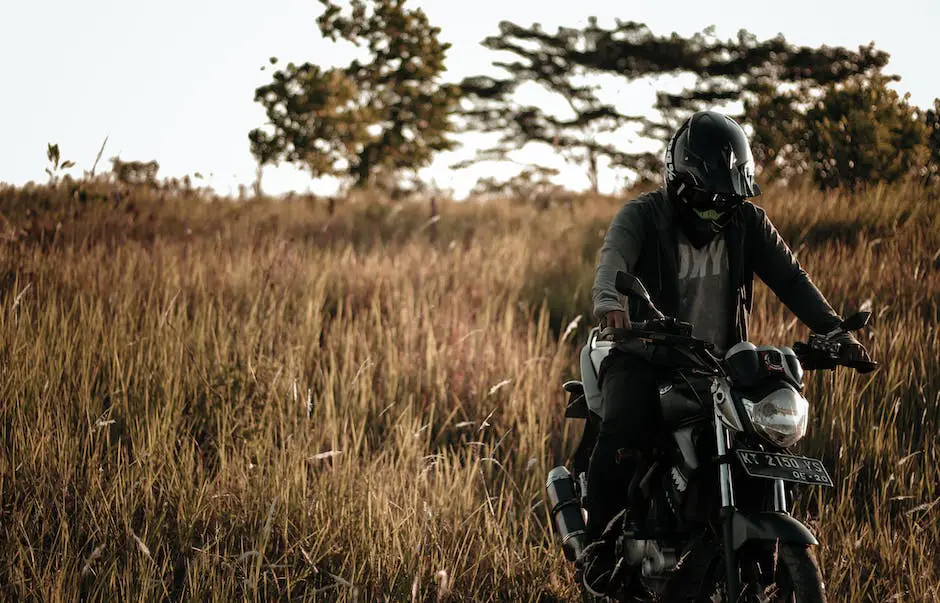
Riding in varied conditions
Title: Safety Tips for Returning to Cycling in Varied Conditions
Introduction:
Cycling is an enjoyable and healthy activity, but varied weather conditions can make it challenging for riders. As an enthusiast or hobbyist, it’s crucial to be prepared for any situation and know how to adapt your riding style accordingly. In this guide, we will discuss some essential tips to ensure you ride safely in different weather conditions, like rain, wind, or darkness.
1. Riding in Rain:
- Wear waterproof and breathable clothing, such as a rain jacket and pants. Make sure to wear bright or reflective clothing to increase visibility.
- Use fenders to prevent water and debris from splashing up onto you and other riders.
- Increase your following distance and be cautious of slippery surfaces. Increased braking distance is necessary on wet roads.
- Use lights and reflectors to ensure visibility to other road users, even during daylight hours.
- Avoid riding through puddles as they can hide potholes or debris that could cause a crash.
2. Riding in Wind:
- Anticipate gusts and maintain a firm grip on your handlebars.
- Stay low on your bike and lean into the wind to minimize resistance.
- Be cautious when riding near large vehicles, as they can create sudden gusts of wind when passing.
- Use your body weight to help stabilize yourself during strong crosswinds.
- Consider riding with a group to reduce the wind resistance and share the burden of leading the pace.
3. Riding in Darkness:
- Use front and rear lights that are bright enough for the road and weather conditions. Make sure your lights are charged and working properly.
- Invest in reflective clothing and accessories, like vests, ankle bands, or helmet stickers to increase your visibility to other road users.
- Plan your route in advance and stick to familiar, well-lit roads.
- Be extra cautious at intersections and when making any turns, as drivers may have difficulty seeing you in the dark.
- Avoid using headphones, as they may limit your ability to hear approaching traffic.
4. General Safety Tips:
- Wear a properly fitted helmet to protect your head in case of an accident.
- Perform a pre-ride inspection to check for potential issues with your bike, such as tire pressure, brakes, and chain.
- Develop your bike handling skills to increase your ability to maneuver around obstacles or make quick turns when needed.
- Obey traffic laws and signal your intentions to other road users.
- Keep your bike well-maintained, clean, and lubricated to ensure optimal performance.
Conclusion:
Being prepared and knowledgeable about different weather conditions is essential for a safe and enjoyable cycling experience. By following these safety tips and using the appropriate gear, you’ll be ready to tackle any cycling challenge that comes your way. Happy riding!

Group riding and communication
Title: Group Riding and Communication: A Guide for Cycling Enthusiasts
Introduction:
Returning to cycling is an exciting endeavor, but safety should always be a top priority. In this guide, we will explore the essentials of group riding, including how to communicate with other cyclists, maintain a consistent pace, and cooperate on the road. By following these safety tips, you can enjoy a fun and secure group cycling experience.
1. Choose and Organize Your Group Wisely
Before even hitting the road, ensure that your group has a similar level of experience and fitness. This will help everyone in the group feel more comfortable riding together and create a more enjoyable experience. Communicate with your group about the planned route, pace, and any expected stops to ensure everyone is on the same page.
2. Maintain a Consistent Pace
Keeping a consistent speed will make the ride smoother and more predictable for all riders. Use a designated leader to set the group’s pace, and try to abide by it. In addition, remember to keep a safe and consistent distance from the person in front of you. Aim for about one bike length for every 10 mph, but adjust based on personal comfort and safety.
3. Use Hand Signals and Verbal Communication
Clear communication among cyclists is essential for safe group riding. Always use hand signals to indicate turns, stops, and other intentions while riding. Here are some common hand signals to keep in mind:
- Left arm straight out: Left turn
- Right arm straight out or left arm bent at a 90-degree angle with the hand pointing up: Right turn
- Left arm bent at a 90-degree angle with the hand pointing down: Slowing or stopping
Along with hand signals, use verbal communication to alert riders behind you of any obstacles, such as potholes, road debris, or pedestrians. Use phrases like ‘car back’ to indicate an approaching vehicle or ‘on your left’ when passing another rider.
4. Stay Alert and Aware
Continuously scanning the road and surroundings for obstacles and potential hazards not only keeps you safe but also benefits the rest of the group. By staying proactive and aware, you can anticipate problems before they arise and take necessary precautions, such as adjusting speed or position.
5. Ride in a Predictable Manner
Avoid sudden moves or braking in a group ride. Instead, try to ride smoothly, predictably, and avoid overlapping wheels with the rider in front of you. If you need to stop or change your path, communicate your intentions with hand signals and verbal cues.
6. Take Turns Leading
In a group ride, cyclists often take turns at the front to share the work and shelter other riders from wind resistance. Communicate with your group when it’s time to switch leaders, and ensure that everyone has a chance to lead the group.
7. Be Prepared
Before embarking on a group ride, ensure that your bike is in good working order, and carry any necessary tools, spare tubes, and a pump. It’s also essential to familiarize yourself with basic bike repairs in case of a mechanical issue during the ride.
Conclusion:
Group rides can be an enjoyable and exhilarating way to improve cycling skills and fitness while connecting with like-minded enthusiasts. By following these safety tips and effectively communicating with your fellow riders, you can ensure that your return to cycling is a fun and safe experience. So, gear up, get out there, and happy riding!
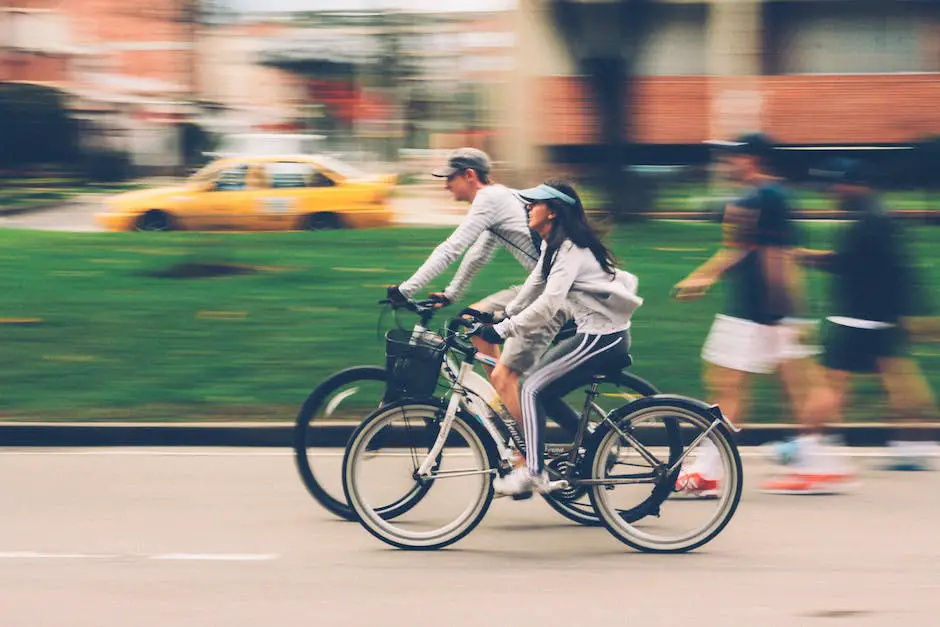
Emergency procedures
Safety Tips for Returning to Cycling:
- Perform a safety check on your bike:
- Check the tires for proper inflation and wear
- Ensure the brakes are functioning properly
- Inspect the chain and gears for damage and proper lubrication
- Adjust the seat and handlebars for comfort and proper fit
- Wear safety gear:
- Always wear a helmet that fits properly and is approved for cycling
- Use reflective clothing or accessories to increase visibility to drivers
- Wear gloves for improved grip and protection in case of a fall
- Consider using a rearview mirror on your helmet or handlebars for increased awareness of your surroundings
- Follow traffic laws and ride defensively:
- Always ride in the same direction as traffic, and obey traffic signs and signals
- Signal your intentions to turn or change lanes
- Keep a safe distance from parked cars to avoid being hit by an opening door
- Stay alert and scan your surroundings for potential hazards
Emergency Procedures:
- How to react during a fall:
- Try to remain calm and avoid panicking
- If possible, attempt to steer your bike away from traffic or towards a softer surface
- Tuck your elbows and knees in, keep your hands on the handlebars, and prepare for impact
- Immediately after the fall, assess yourself for injuries and seek medical attention if necessary
- How to react during a sudden stop:
- Apply both front and rear brakes evenly to avoid losing control of your bike
- Keep your weight centered over the bike, and bend your knees and elbows to absorb the shock of the sudden stop
- Be prepared to use your feet for additional stability if needed
- If possible, try to warn other cyclists or pedestrians behind you of the sudden stop
- How to react when encountering aggressive drivers:
- Stay calm and avoid engaging or provoking the driver
- Maintain a safe distance from the vehicle and be prepared to slow down or change direction if needed
- If the driver becomes dangerous or threatening, move off the road and call for help if necessary
- Report aggressive drivers to the authorities if you are able to obtain their license plate number and vehicle description
- How to react when encountering animals:
- Slow down and maintain a safe distance from the animal
- Do not attempt to touch or approach the animal, as this may cause it to become aggressive
- If the animal is in your path, stop and wait for it to move or consider finding an alternate route
- Make noise to alert the animal of your presence and encourage it to move away from the path
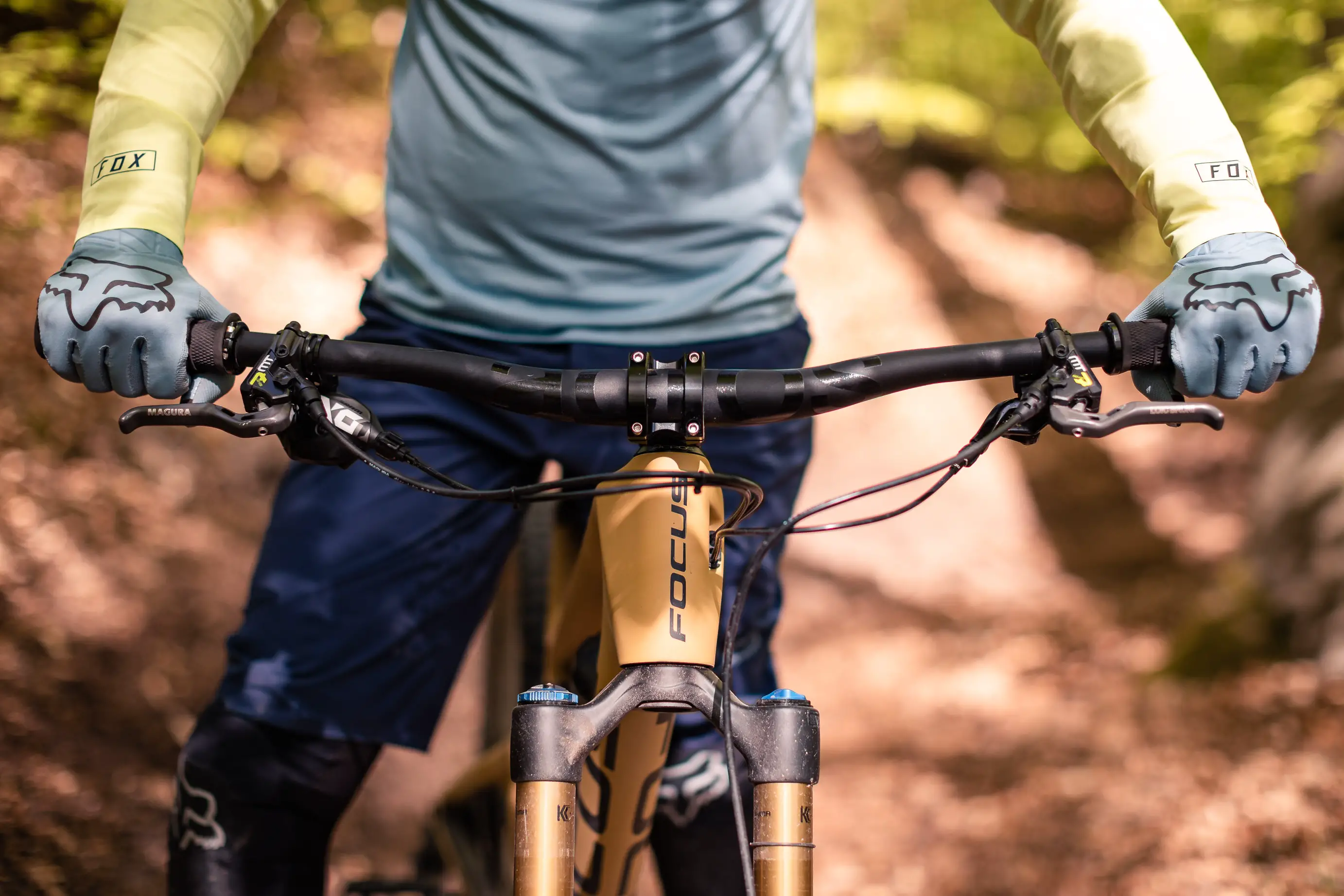
Photo by axelbrunst on Unsplash
Route planning and navigation
Title: Returning to Cycling: Route Planning and Navigation Safety Tips
Introduction:
As an enthusiast or hobbyist eager to get back into cycling, it’s essential to prioritize safety while you’re rediscovering the joy of biking. Among the crucial aspects of cycling safety is route planning and navigation. Choosing the safest and most convenient route can have a considerable impact on your overall cycling experience, especially when you’re returning to this thrilling outdoor activity.
This guide will walk you through the best practices and essential tips for effective route planning and navigation for a safe and enjoyable cycling experience. Let’s get started!
1. Familiarize yourself with local cycling infrastructure:
- Look up bicycle lanes, bike-friendly roads, and dedicated cycling paths in your area.
- Consult your local bicycle shop or area cycling clubs for recommendations on the safest and most convenient routes.
- Visit your city’s transportation website to access maps and traffic information for cyclists.
2. Choose the right route for your skill level:
- Assess your cycling expertise, and pick a route that aligns with your capabilities.
- As a beginner, aim for flat, low-traffic roads or bike paths.
- Gradually progress to more challenging routes, such as those with hills or busier streets, as you become more confident and comfortable on your bike.
3. Plan your route using digital tools:
- Use dedicated cycling navigation apps, such as Google Maps, Komoot, or RideWithGPS to explore different route options.
- Customize your route by specifying your preferred distance, elevation, and any points of interest you’d like to include.
- Download offline maps to ensure access to navigation, even without an internet connection.
4. Test your route in advance:
- If possible, try out your chosen route during a time when traffic is minimal or non-existent.
- Look for potential hazards like potholes, blind corners, or uneven surfaces, and assess whether you feel comfortable navigating them.
- Adjust your route if necessary, finding alternative paths or roads to minimize risks and maximize safety.
5. Prioritize visibility and safety:
- Plan your ride during daylight hours to ensure optimal visibility for both yourself and other road users.
- Take note of any poorly lit sections of your route and consider using bike lights to increase your visibility.
- If cycling in a group, ensure everyone knows the route and has access to maps or navigation tools in case of separation.
6. Stay alert:
- Always pay close attention to your surroundings and be prepared for unexpected changes in road conditions or traffic patterns.
- Watch for potential hazards, like car doors opening or pedestrians entering your path.
- Familiarize yourself with local traffic laws and be prepared to follow them at all times.
7. Carry essential items:
- Bring a fully charged phone with access to your chosen navigation app.
- Pack a physical map and a compass as backups in case your phone’s battery dies or you lose signal.
- Carry essential bike repair tools, such as a spare tube, tire levers, and a pump or CO2 inflater, in case of any maintenance issues while on route.
Conclusion:
Planning and navigating a safe route can significantly bolster your confidence and enjoyment when returning to cycling. By leveraging digital tools, familiarizing yourself with the local cycling infrastructure, and staying vigilant throughout your ride, you’ll be well equipped to tackle the road ahead with both safety and fun in mind. Happy cycling!

First aid and injury prevention
Introduction:
Returning to cycling can be both exciting and nerve-wracking, especially when it comes to safety concerns. As a cycling enthusiast, it’s essential to learn basic first aid techniques and injury prevention strategies to be better prepared in case of accidents or physical discomfort. This guide will provide you with valuable information on staying safe while enjoying your cycling journey.
I. Preparing for Your Ride
- Assess your equipment: Make sure your bike is in good working condition, paying particular attention to the brakes, tires, and gears. Ensure that your helmet fits correctly and securely, and wear appropriate clothing for the weather conditions.
- Check your fitness level: If you are new to cycling or returning after a break, gradually increase your cycling time and intensity to avoid injury.
- Plan your route: Be familiar with the roads you’ll be cycling on, and consider traffic, road conditions, and any potential hazards.
- Warm-up: Perform a proper warm-up, including light aerobic activity and dynamic stretching, to reduce the risk of injury during your ride.
II. Injury Prevention Strategies
- Wear protective gear: Always wear a properly-fitted helmet, gloves, and appropriate clothing. Consider using additional safety gear, such as knee and elbow pads, for more aggressive cycling activities.
- Follow traffic rules: Obey traffic signs and signals, stay in designated bike lanes, and be cautious at intersections.
- Maintain proper cycling posture: Keep your back straight, elbows slightly bent, and knees in line with your feet to reduce stress on your joints and muscles.
- Stay hydrated: Drink water before, during, and after your ride to prevent dehydration, which can lead to muscle cramps and fatigue.
- Know your limits: Listen to your body, and stop or slow down if you feel pain or discomfort.
III. Basic First Aid Techniques for Cyclists
- Cuts and scrapes: Clean the affected area with mild soap and water, apply an antibiotic ointment, and cover with a sterile bandage.
- Bruises: Apply a cold pack to the bruised area to reduce swelling and pain.
- Sprains and strains: Use the RICE method (Rest, Ice, Compression, Elevation) for immediate treatment. Consult a medical professional if the pain persists or worsens.
- Head injuries: Always wear a helmet to prevent head injuries. If you suspect a head injury, seek medical attention immediately. Watch for symptoms like disorientation, vomiting, or worsening headache.
- Cramps: Stretch the affected muscle and massage gently to relieve cramps. Make sure to stay hydrated.
IV. What to Do in Case of an Accident
- Remain calm and assess the situation: Prioritize your safety and the safety of those around you.
- Call for help: If you or someone else is injured, call 911 or your local emergency number for assistance.
- Administer first aid: Use the techniques mentioned in this guide to assist if you are capable of doing so.
- Wait for help: Do not move anyone with severe injuries, and wait for professional medical assistance.
Conclusion:
As you return to cycling or continue with your cycling journey, understanding the importance of first aid and injury prevention strategies will help you stay safe and enjoy your ride. Always be prepared, follow safety guidelines, and keep your cycling experience a positive and healthy one.
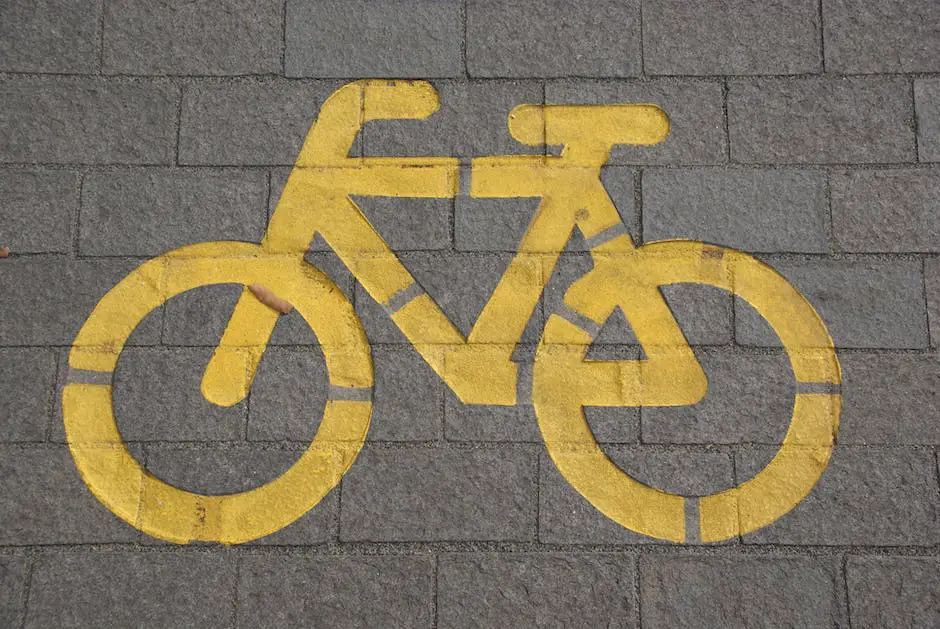
With these guidelines in mind, you’re well on your way to a safe and successful return to cycling. By maintaining your bicycle, using appropriate equipment, practicing proper posture, and respecting traffic laws and etiquette, you’ll minimize your risk of injury and maximize your enjoyment on the road. Don’t forget to keep learning and refining your skills as you ride, and most importantly—have fun!
